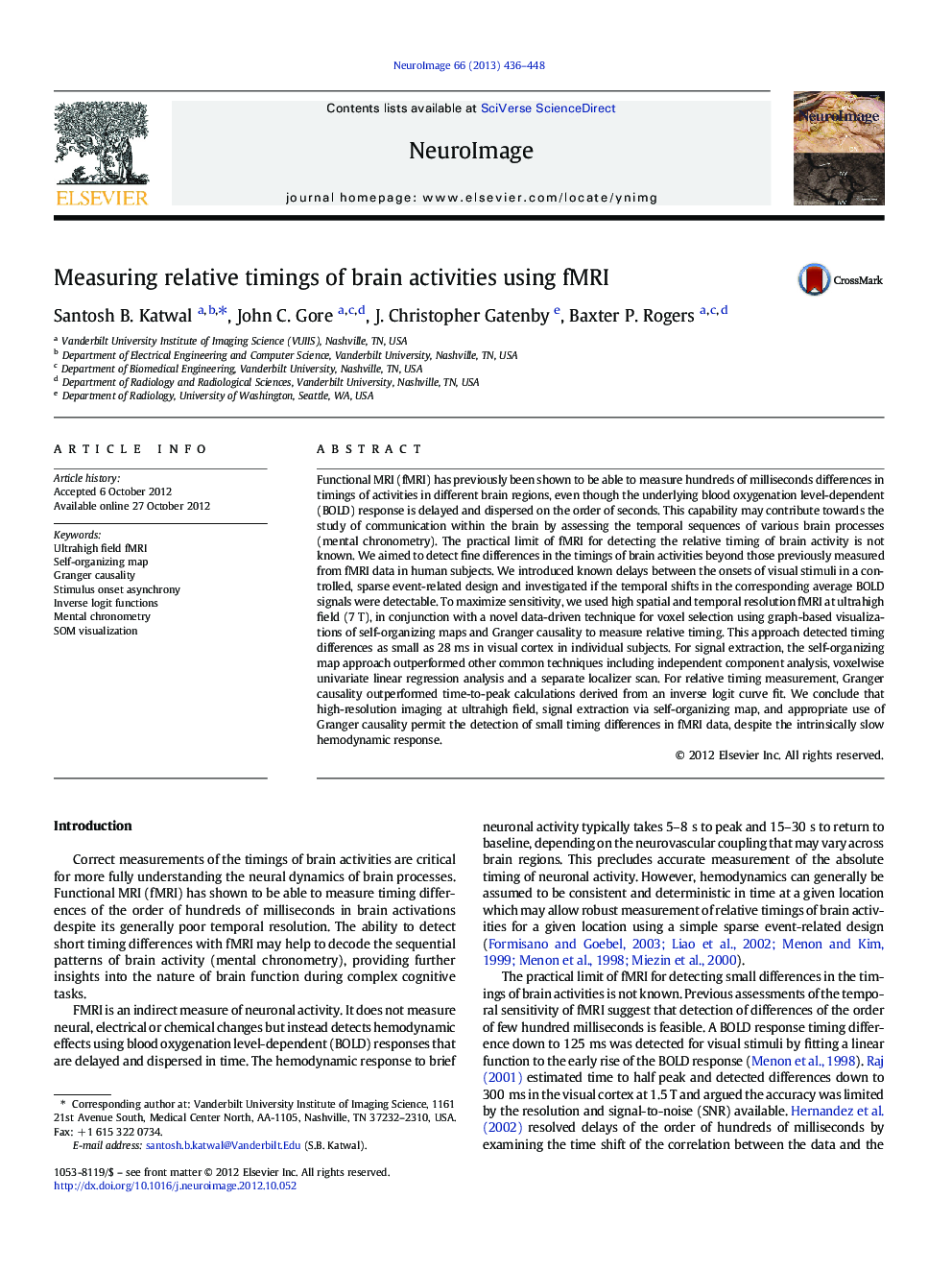| کد مقاله | کد نشریه | سال انتشار | مقاله انگلیسی | نسخه تمام متن |
|---|---|---|---|---|
| 6030658 | 1580938 | 2013 | 13 صفحه PDF | دانلود رایگان |

Functional MRI (fMRI) has previously been shown to be able to measure hundreds of milliseconds differences in timings of activities in different brain regions, even though the underlying blood oxygenation level-dependent (BOLD) response is delayed and dispersed on the order of seconds. This capability may contribute towards the study of communication within the brain by assessing the temporal sequences of various brain processes (mental chronometry). The practical limit of fMRI for detecting the relative timing of brain activity is not known. We aimed to detect fine differences in the timings of brain activities beyond those previously measured from fMRI data in human subjects. We introduced known delays between the onsets of visual stimuli in a controlled, sparse event-related design and investigated if the temporal shifts in the corresponding average BOLD signals were detectable. To maximize sensitivity, we used high spatial and temporal resolution fMRI at ultrahigh field (7 T), in conjunction with a novel data-driven technique for voxel selection using graph-based visualizations of self-organizing maps and Granger causality to measure relative timing. This approach detected timing differences as small as 28Â ms in visual cortex in individual subjects. For signal extraction, the self-organizing map approach outperformed other common techniques including independent component analysis, voxelwise univariate linear regression analysis and a separate localizer scan. For relative timing measurement, Granger causality outperformed time-to-peak calculations derived from an inverse logit curve fit. We conclude that high-resolution imaging at ultrahigh field, signal extraction via self-organizing map, and appropriate use of Granger causality permit the detection of small timing differences in fMRI data, despite the intrinsically slow hemodynamic response.
Journal: NeuroImage - Volume 66, 1 February 2013, Pages 436-448